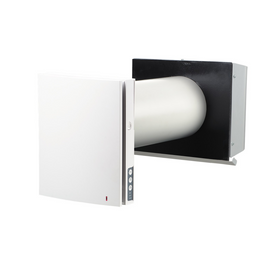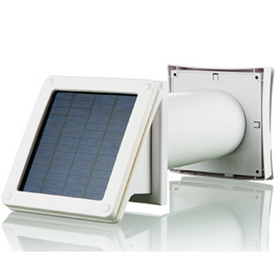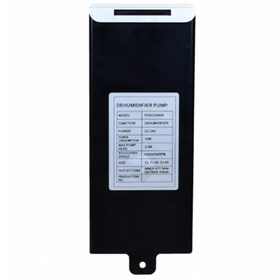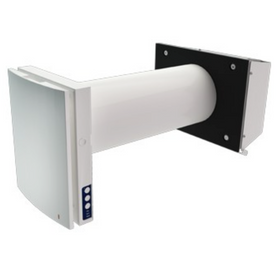
Unhealthy Ventilation: What You Need to Know
Last Updated: Apr 11, 2025Haven't we already covered healthy ventilation? Yes, but we have not dived into the deeper issues of house ventilation gone wrong. Ventilation is of utmost importance because if ventilation and pressures are out of sync in a home, people can be at serious risk.
Table of Contents
- The Analogy: Fish Tanks and Houses
- The Real Air Quality Problem: Back-Drafting
- Fixing the Air Quality Problem
- Balanced Ventilation Explained
- Bottom Line on Healthy Home Ventilation

Nature hates a vacuum, so it will try to balance your house out on its own by pulling air into the home. In an older, pre-renovated home, it would come from the attic hatch, old windows, nooks, and crannies in the walls, around outlets, etc. But now, with an airtight home, it has to take it from somewhere else. Where does this "makeup air" come from? If you have a gas fireplace with a chimney, that becomes the source of makeup air. So, instead of exhausting out, the stack allows air to come into the home.
This source of air intake is where things can become dangerous. We know not to run the car in the garage with the doors closed because of carbon monoxide poisoning, and this is the same thing. When you burn gas, whether it's your car or your fireplace, carbon monoxide is emitted. This emission source is why there is a genuine need to have a carbon monoxide detector near every gas appliance at home.

I have seen many signs of back-drafting in my inspections. These signs include things like:
- Staining around exhaust hoods of hot water tanks.
- Carbon monoxide detectors are going off when homeowners shower. This alarm could be due to a new bathroom fan and the fireplace in the basement running simultaneously. They could create enough draw for the hot water tank vented back into the home.
Many of these were really old leaky houses, not airtight energy-efficient ones. It can happen in any home!
Fixing the Air Quality Problem
Count The Air Intakes and Exhausts
What can you do? The first step is to count all the exhausts in your home. These might include the kitchen fan or hood over the stove, the bathroom fans, the dryer, the fireplace, the gas-powered hot water tank, and the gas-powered furnace/boiler. Now count up how many fresh air supplies you have in your house. Is there one? Where is it?
Once you've done your tally, you might ask, could we reverse the venting in our kitchen and bathroom exhausts and the dryer into the home, especially in winter, when we need more moisture? No. This course of action is dangerous, as your home cannot handle the humidity generated by the dryer at that intensity. You can hang-dry your clothes in winter, but do not vent them inside. Were you to vent the bathroom exhaust fans into attics and ceiling cavities, it would cause mold growth and damage to insulation.
Exhausting kitchen vents inside is a little more complicated. There aren't building codes regulating whether kitchen exhaust fans should exhaust inside or out for most regions. Often, it is enough for them to be present. What's more, the house may have been constructed with a recirculating kitchen exhaust and an electric stove. At some point, it was upgraded to a gas stove but kept the same exhaust. This setup is dangerous, but it happens all the time. Exhausting cooking fumes inside take the grease and ultrafine particulate from the stove and throws it back into the house. Aside from concerns about natural gas, this cooking particulate is measurable. These ultrafine particulates impact the home's air quality and make the home a little stickier and dirtier. (Have you ever looked at the top of your kitchen cupboards? It's an eye-opener!) Although exhausting kitchen fumes to the outside is wise for all types of stoves, it is critical for gas stoves and is vital from a health perspective.

If you want an oversized beautiful exhaust hood in the kitchen, it must have a dedicated makeup air supply. The makeup air needs to be balanced and directly wired to the kitchen exhaust hood. This balancing ensures that they both operate together all the time, without needing to turn on two switches.
Balanced Ventilation Explained
As discussed in my previous article, balanced ventilation comes back into play. The purpose of balancing is to prevent you from accidentally killing yourself, so it is essential. A heat recovery ventilator (HRV) in the north and an energy recovery ventilator (ERV) in the south are necessary for new houses. In your region, it may be a code requirement. When properly balanced, these units will provide the right amount of fresh air while exhausting stale air at the same time.
These units need to be balanced at both low and high settings by a mechanical contractor. It requires a pressure gauge to measure the drop across the inlet and outlet, so, unfortunately, it is not feasible for homeowners to do it themselves. It only takes about an hour to balance a house; it is not that difficult for a heating contractor who has taken the half-day course.
In a nutshell, the process goes like this:
- Turn everything in the house off (this is the low-pressure setting)
- Balance the H/ERV
- Turn everything on—the dryer, the hood, all the exhaust fans, etc. (this is a high-pressure setting)
- Balance the H/ERV again
The biggest issue with this is that balancing is very rarely completed. Balancing is something that you might have to push your installation contractor to do, or nip the problem in the bud and agree on this before you sign the contract.

Bottom Line on Healthy Home Ventilation
My recommendations: please consider installing an HRV or ERV if you do not already have one. If you do have one, or get one installed, make sure it is balanced. You can check this by looking for the balancing sticker on the unit's front, showing the high and low-pressure settings. If there is no sticker, do not pay the installer—that is my rule. Also, install some carbon monoxide detectors throughout the house, especially near your gas appliances. Better yet, replace your gas-powered appliances with all-electric, so there is no carbon monoxide in your home. By following these steps, you can breathe a sigh of relief, knowing you have safe and fresh air.
Stephen Collette
Stephen Collette is a Building Biologist, Building Science Consultant, LEED Accredited Professional, and a Heritage Professional. Stephen is the owner of Your Healthy House and lives in Lakefield, ON with his wife and 2 daughters.











